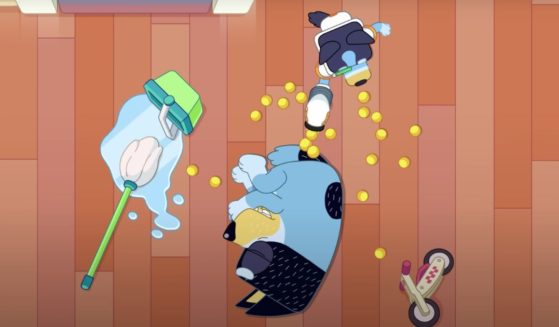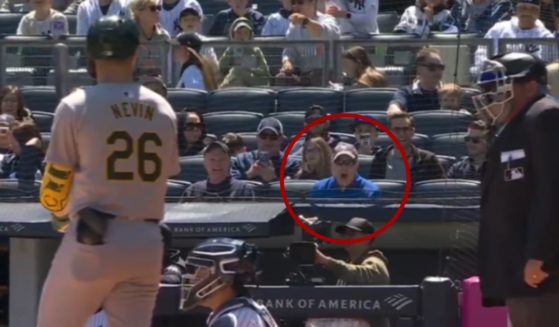Ancient Mosaic Discovered in Israeli Church May Depict One of Jesus' Well-Known Miracles
An excavation team discovered a beautifully preserved mosaic floor in an ancient Israeli church that may depict one of Jesus’ well-known miracles earlier this summer.
The “Burnt Church” is an ancient church within the Hippos-Sussita Excavation Project in northern Isreal.
Experts believe the sixth-century church site, which overlooks the Sea of Galilee, was burnt down during the Sasanian Empire’s conquest in the seventh century.
Although losing such a rich piece of history would normally be viewed as a loss, the ash from the burnt roof preserved the elaborate mosaic floor.
“The fire caused the church mosaic floor to be conserved in an amazing way, since the roof was burnt down and collapsed on the floor of the church and covered it in a layer of ash, thus protecting it from being damaged over time,” the University of Haifa, who is involved in the project, said in statement.
As researchers exposed the floor inside of the church they discovered beautifully colored symbols and inscriptions that gave insight to the church’s beginnings.
The two inscriptions found were in Greek.
“The first one tells about the two fathers of the church, Theodoros and Petros constructing a sanctuary for a martyr, while the second one, which is located inside a medallion at the center of the mosaic, exposes the name of the martyr — Theodoros,” the university said.
The mosaic also heavily featured fish and fruit throughout the design.
According to the Israel Times, 12 baskets filled with fishes and what may be loaves of bread are also depicted.
Dr. Michael Eisneburg, head of the Haifa University excavation team, believes the mosaic may show that Jesus’ miracle of feeding the 5,000 may have occurred nearby.
“There is no doubt that the local community was well familiar with the two miracles of Feeding the Multitude and perhaps knew their estimated locations better than us,” he said in a statement.
“The assumption that the artisan or the persons who ordered the work wanted to create an affinity to a miracle which took place nearby must be logical.”
In Mark 8: 16-21, Jesus and his disciples discuss two different miracles of multiplication: one in which served Jews and resulted in 12 baskets of loaves and another in which he served pagans and resulted with seven.
“For some scholars, the second multiplication is a merely symbolic duplication,” Galilee-based priest Dr. Francesco Giosuè Voltaggio told Israel Times, but he said the Burnt Church mosaic “reevaluates the historicity of the two miracles.”
Traditionally the location for the first event of multiplication is believed to be at the Church of Multiplication in Tabgha, across the Sea of Galilee from Hippos, and the location of the second in Tel Hadar, about six miles north of the Burnt Church.
Dr. Eisenburg believes a closer examination of the text shows that the miracle could not have occurred in Tabgha.
“Jesus walked on the sea towards Tabgha after the miracle of the loaves and fishes: How could the miracle have happened there?” he asked.
He now proposes the first miracle of multiplication may have occurred on the northern border of Hippos-Sussita.
Archaeologist Dr. Anat Avital, however, does not agree that the Burnt Church mosaic depicts baskets of loaves and fishes.
She believes the baskets of loaves are actually baskets of fruit.
“It could only be fruit, on the size scale of apples. I have seen many other mosaics with almost exactly the same baskets, which usually contain fruit, sometimes flowers,” Dr. Avital said, opposing Dr. Eisenburg’s theory.
She also said the presence of a pruning tool near one of the baskets further proves her interpretation.
Despite the debate surrounding the historical significance of the mosaic, researchers on both sides are approaching their final interpretation heedfully.
“The fish themselves have a number of additional symbolical meaning in the Christian world, and their interpretation requires caution,” Dr. Eisenburg said.
Truth and Accuracy
We are committed to truth and accuracy in all of our journalism. Read our editorial standards.












